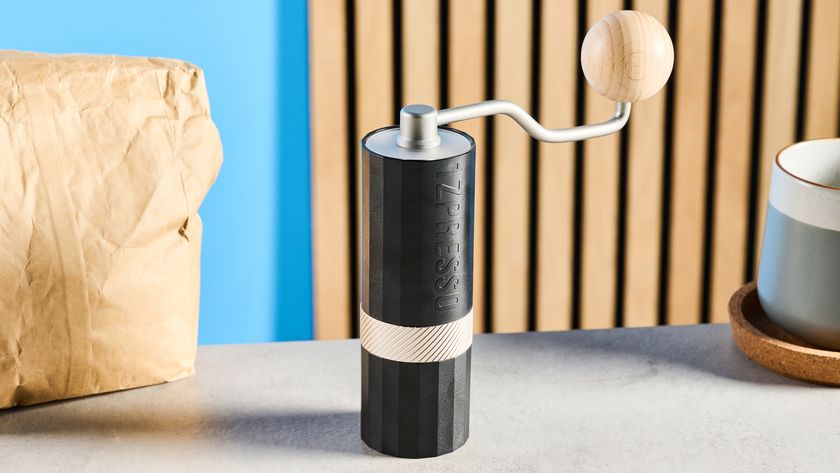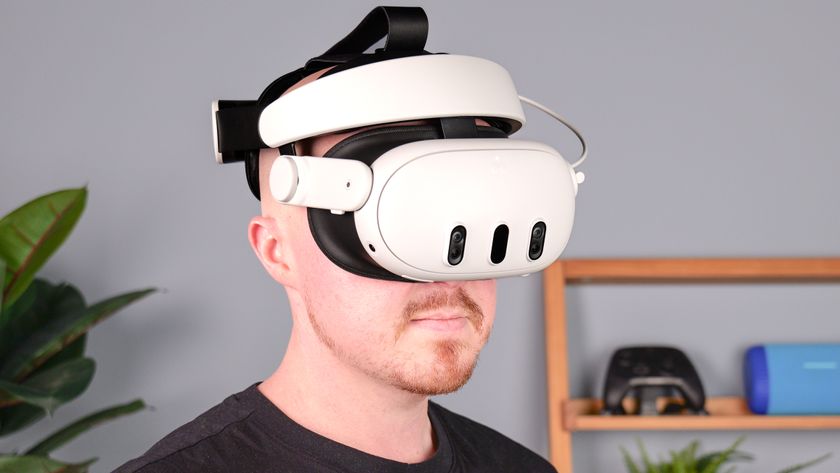Tom's Guide Verdict
For times when space is at a premium, either at a convention or in your home, the Logitech G Pro absolutely nails the small keyboard design.
Pros
- +
Small and sleek
- +
No extraneous buttons
- +
Detachable cord
Cons
- -
High price
- -
No carrying case
Why you can trust Tom's Guide
Numpads are passé. While the extra set of numerals can come in handy for touch typists, retail clerks and data-entry specialists, gamers are starting to realize that the far-right number keys don't do a whole lot to benefit gameplay, especially in the burgeoning e-sports market. The Logitech G Pro keyboard ($130) costs a bundle, but it delivers a robust, colorful tenkeyless keyboard that's perfectly suited to the tournament scene. Everyday gamers can get a cheaper keyboard that feels just as good and does just as much, but for times when space is at a premium, either at a convention or in your home, the G Pro absolutely nails the small keyboard design.
Design
The G Pro looks like what would happen if Logitech were to take one of its sleek Orion keyboards and simply chop off the numpad with some kind of high-tech paper cutter. It has a full selection of keys (minus the numpad), in addition to a key that controls the lighting and one that activates a Game Mode. If you're not familiar with Game Mode, it prevents you from clicking keys such as Alt-Tab or the Windows button, so that you won't accidentally shut down your game midway.

That's most of what there is to say about the keyboard's looks. It's small (14.2 x 6.0 x 1.4 inches), attractive and streamlined. Instead of employing discrete media controls, you can use the Fn key and the top row of Function buttons. While I usually prefer discrete controls, they're not at all necessary on a tournament-focused device.
My only complaint is that it took me a little while to figure out how to save the onboard profile.
The G Pro also comes with a detachable, braided micro-USB cable, with hooks on either side for a secure fit. This is good for travel, but the tenkeyless Razer BlackWidow Chroma comes with a carrying case as well, putting the G Pro a little bit behind the curve. You'll either want to hold on to the box or invest in a separate case.
MORE: Our Favorite Gaming Keyboards
Keys
Gamers who have used other recent Logitech keyboards know what they're in for with the G Pro. The keyboard makes use of the company's ubiquitous Romer-G mechanical switches. If you've never tried them before, they feel like Cherry MX Browns: tactile and fairly quiet. While Cherries are the standard to beat, Romer-Gs are supposed to be a hair faster, more responsive and more durable, so you could do much worse. Taken on their own merits, they're pretty comfortable.

The Romer-G switches are also competent for typing. I compared the Logitech G Pro to my usual Logitech G810 Orion Spectrum (which, to be fair, also uses Romer-G keys) on TypingTest.com. With the G Pro, I typed 115 words per minute with nine errors, and with the Orion, I scored 118 words per minute with nine errors. The difference is trivial.
Features
The Logitech G Pro runs on the Logitech Gaming Software, which, as usual, is excellent. You can program the F1 through F12 keys, as well as adjust the backlighting and keep track of your stats (where your fingers spend the most time, how often you press buttons, and so forth).

Considering tournament players usually aren't allowed to program keys or run proprietary software, there's only one feature here that really bears mentioning. There's one onboard profile for the G Pro keyboard, like the one Logitech often offers in its mice. This profile stores one lighting profile, which means that you can hook up the keyboard to any computer and have it retain any key colors that you care to program.
The keyboard's compact size is a boon, especially for the e-sports crowd.
I'm not sure if this constitutes a bona fide "Big Deal," but it's a helpful feature, particularly because the keyboard's default color wave can be somewhat distracting, and turning off lighting entirely makes the peripheral feel a little plain. My only complaint is that it took me a little while to figure out how to save the onboard profile. This option is usually on the home screen in Logitech's software, but here, it's under the lighting section and available only for static key colors, not patterned effects. It's hardly a deal breaker, but it is confusing for longtime Logitech followers.
MORE: The Best Headsets for Immersive Gaming
Performance
I put the G Pro through its paces, with both e-sports and narrative-driven titles, and it worked well in both cases. I had no trouble gliding around the battlefield as Mercy in Overwatch or commanding Jaina Proudmoore to encase enemies in ice in Heroes of the Storm. Likewise, the keyboard was competent and responsive when I was adventuring through the realm of Eorzea in Final Fantasy XIV or taking down bandit camps in The Witcher 3: Wild Hunt.

The keyboard's compact size is a boon, especially for the e-sports crowd. It was easy to play Overwatch and Heroes of the Storm with the keyboard straight in front of me, or off to the side at an angle; such maneuverability is sometimes necessary, depending on how much space you have at a tournament. Otherwise, it's just as responsive as Logitech Orion keyboards, which have already proved their worth as e-sports peripherals.
Bottom Line
If you want a small mechanical keyboard that's suitable for the tournament scene and you don't want to sacrifice comfort or performance, the Logitech G Pro is the one you should get. But if you need something larger — or cheaper — for everyday use, you might want to go with something like the Logitech G810 Orion or the Corsair Strafe.

However, $130 is a lot to ask for a tenkeyless model, so the high price is worth considering before taking the plunge. Otherwise, Logitech knows how to make a quality keyboard, and the G Pro is no exception.
Marshall Honorof is a senior editor for Tom's Guide, overseeing the site's coverage of gaming hardware and software. He comes from a science writing background, having studied paleomammalogy, biological anthropology, and the history of science and technology. After hours, you can find him practicing taekwondo or doing deep dives on classic sci-fi.


























